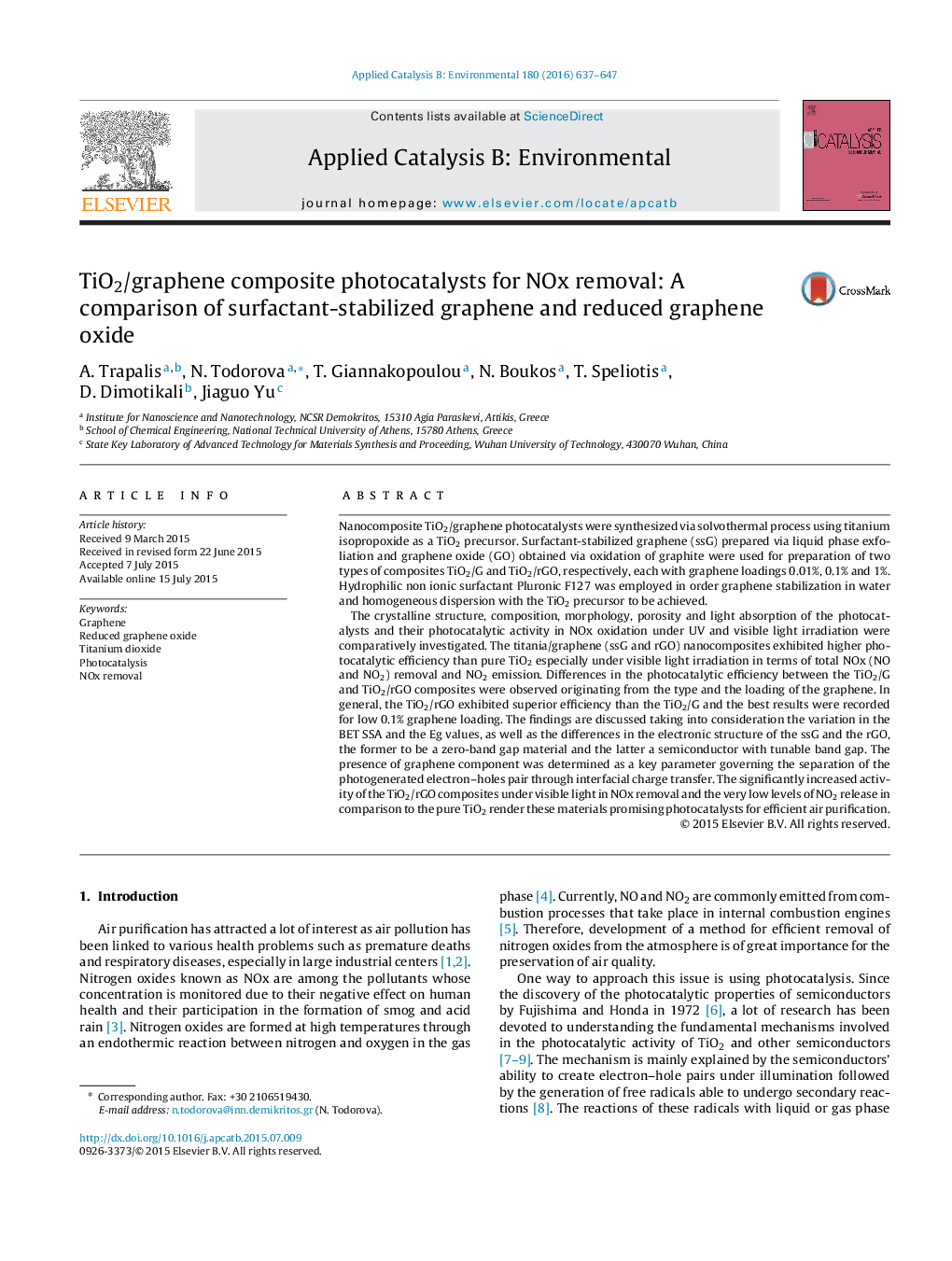| کد مقاله | کد نشریه | سال انتشار | مقاله انگلیسی | نسخه تمام متن |
|---|---|---|---|---|
| 45283 | 46407 | 2016 | 11 صفحه PDF | دانلود رایگان |

• Hydrophilic surfactant-stabilized graphene employed for in situ synthesis of TiO2.
• TiO2/graphene composites prepared with pure graphene (G) and graphene oxide (GO).
• TiO2/rGO showed higher De-NOx activity than TiO2/G under both UV and visible light.
• e-Trapping by graphene rather than SSA and Eg is key factor for better efficiency.
• Low release of intermediate NO2 related to favorable NO2 adsorption to graphene.
Nanocomposite TiO2/graphene photocatalysts were synthesized via solvothermal process using titanium isopropoxide as a TiO2 precursor. Surfactant-stabilized graphene (ssG) prepared via liquid phase exfoliation and graphene oxide (GO) obtained via oxidation of graphite were used for preparation of two types of composites TiO2/G and TiO2/rGO, respectively, each with graphene loadings 0.01%, 0.1% and 1%. Hydrophilic non ionic surfactant Pluronic F127 was employed in order graphene stabilization in water and homogeneous dispersion with the TiO2 precursor to be achieved.The crystalline structure, composition, morphology, porosity and light absorption of the photocatalysts and their photocatalytic activity in NOx oxidation under UV and visible light irradiation were comparatively investigated. The titania/graphene (ssG and rGO) nanocomposites exhibited higher photocatalytic efficiency than pure TiO2 especially under visible light irradiation in terms of total NOx (NO and NO2) removal and NO2 emission. Differences in the photocatalytic efficiency between the TiO2/G and TiO2/rGO composites were observed originating from the type and the loading of the graphene. In general, the TiO2/rGO exhibited superior efficiency than the TiO2/G and the best results were recorded for low 0.1% graphene loading. The findings are discussed taking into consideration the variation in the BET SSA and the Eg values, as well as the differences in the electronic structure of the ssG and the rGO, the former to be a zero-band gap material and the latter a semiconductor with tunable band gap. The presence of graphene component was determined as a key parameter governing the separation of the photogenerated electron–holes pair through interfacial charge transfer. The significantly increased activity of the TiO2/rGO composites under visible light in NOx removal and the very low levels of NO2 release in comparison to the pure TiO2 render these materials promising photocatalysts for efficient air purification.
Figure optionsDownload as PowerPoint slide
Journal: Applied Catalysis B: Environmental - Volume 180, January 2016, Pages 637–647